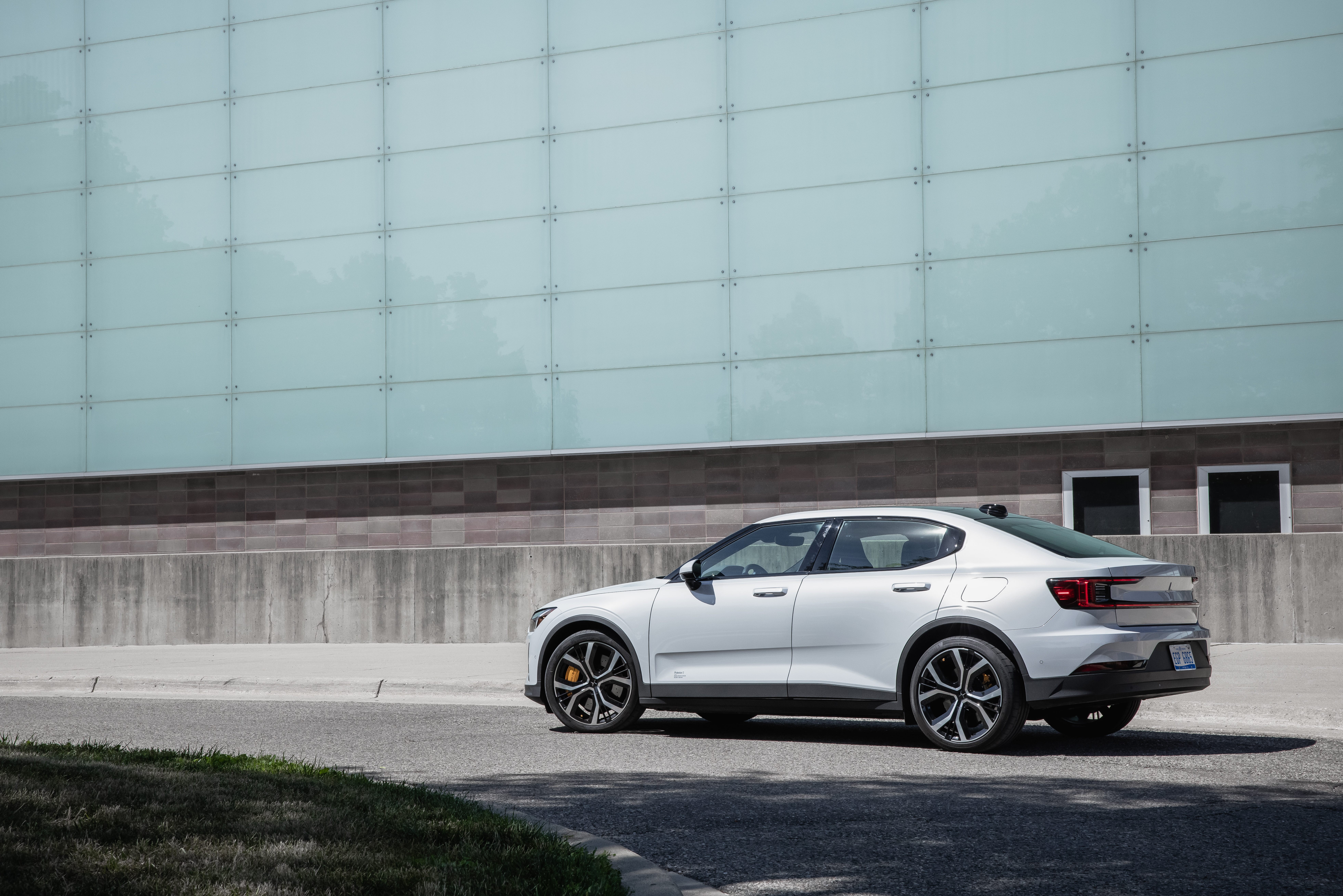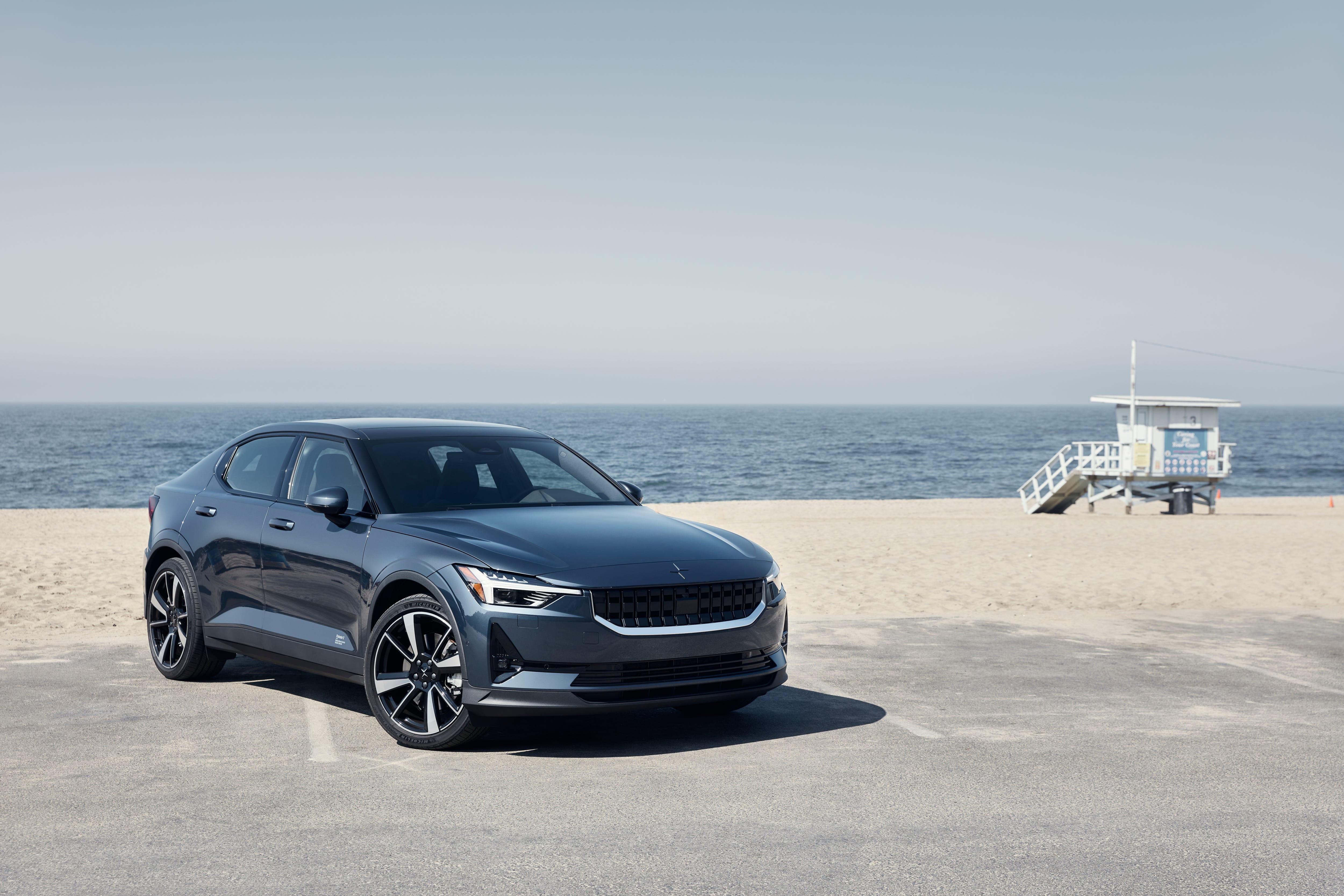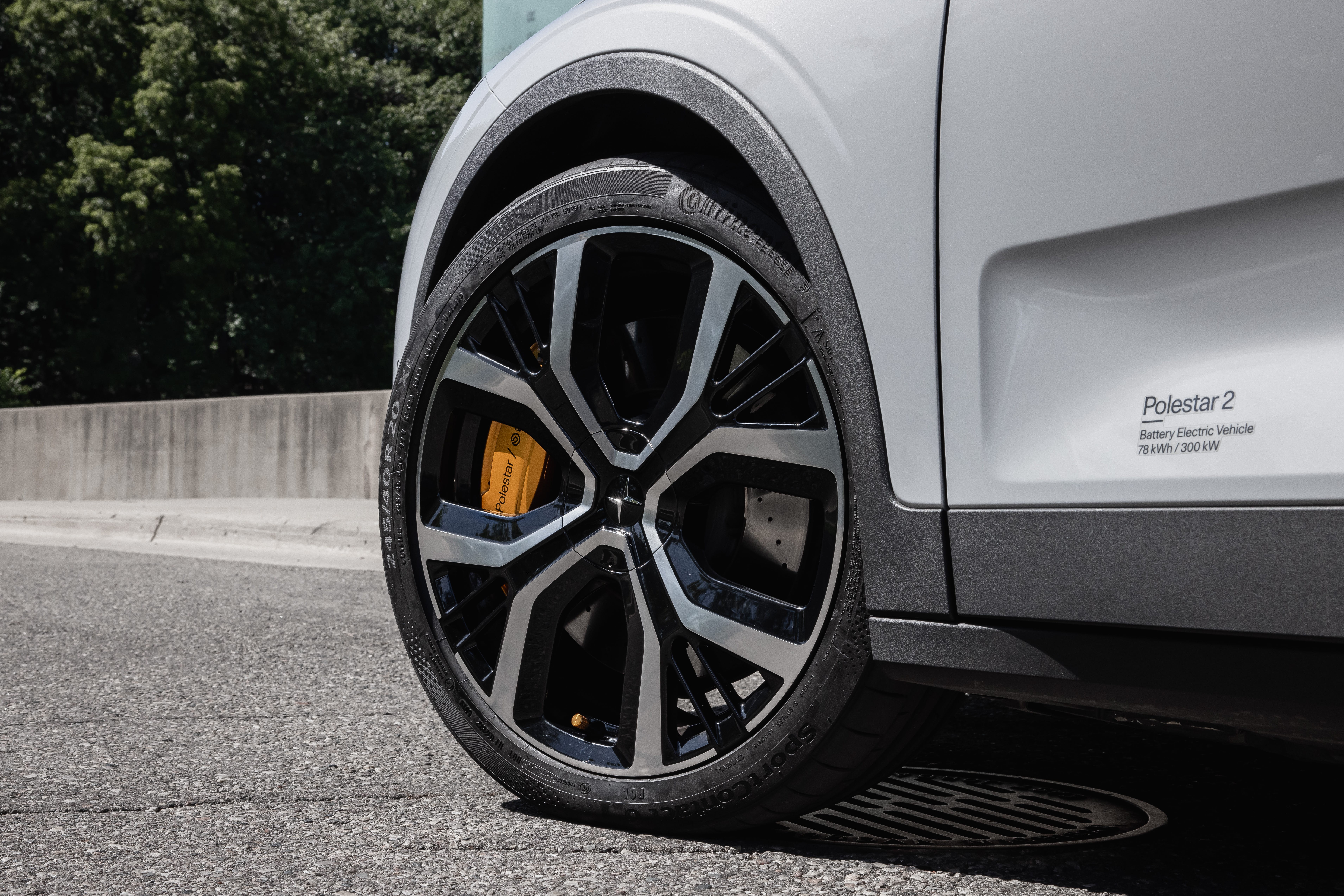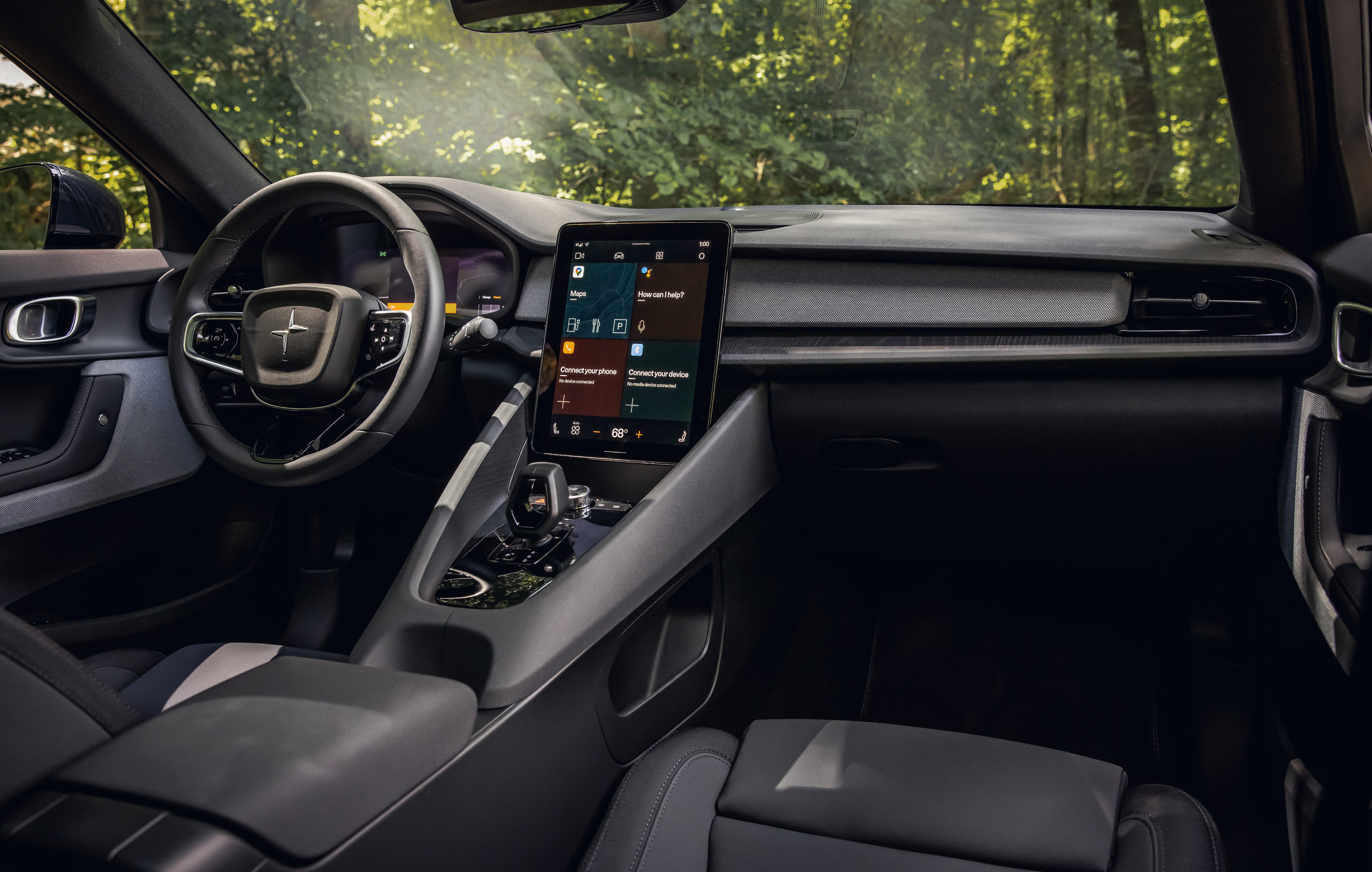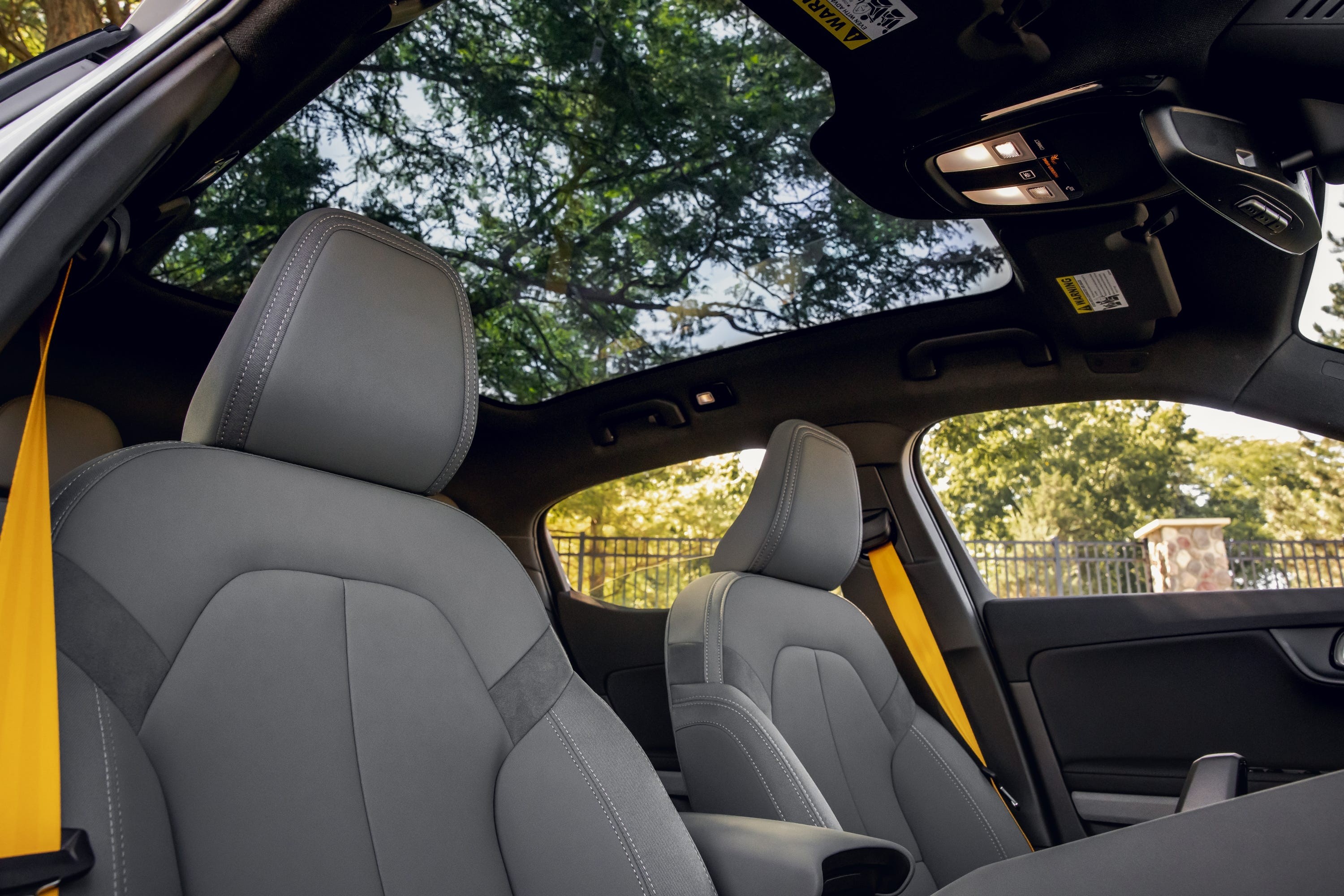The electric vehicle (EV) market is rapidly expanding, with new models constantly vying for attention. Among these contenders is the 2021 Polestar 2, the first fully electric, mass-production vehicle from Polestar, Volvo’s spin-off electric performance brand. Having spent considerable time experiencing various EVs from Tesla to Hyundai and Chevrolet, the Polestar 2 presented a unique blend of Scandinavian design, performance, and technology that warrants a closer look.
Polestar emerged from Volvo’s racing heritage, initially crafting high-performance versions of Volvo’s traditional models. Now, as a standalone brand under the Volvo umbrella, Polestar is dedicated to pushing the boundaries of electric mobility. While the limited-production Polestar 1, a high-end hybrid coupe, served as a halo car, the Polestar 2 is designed to be accessible to a broader audience and make a significant impact in the EV landscape.
Image: Front view of a 2021 Polestar 2 electric vehicle showcasing its sleek design and distinctive headlights.
Starting at around $59,900, the 2021 Polestar 2 enters a competitive segment. It features a 78 kWh battery pack and an EPA-estimated range of 233 miles. While this range is respectable, it falls slightly short of some competitors, notably the Tesla Model 3. However, focusing solely on range overlooks the holistic experience the Polestar 2 delivers.
The Polestar 2’s aesthetic is immediately striking. It inherits Volvo’s design DNA, characterized by clean lines and a sophisticated presence. The interior embodies Scandinavian minimalism, creating a serene and premium cabin environment. The Launch Edition model I tested boasted a vegan textile interior and the signature gold seatbelts, a hallmark of the Polestar brand, adding a touch of sporty elegance.
Practicality is also well-considered in the Polestar 2’s design. A thoughtfully placed compartment ahead of the gear selector provides convenient wireless phone charging. While the cupholder design could be improved, particularly the accessibility of the one obscured by the center armrest, the overall cabin ergonomics are well executed. The seats are comfortable and supportive, and the inclusion of manual thigh bolsters is a notable feature often absent in vehicles in this class. Despite its relatively compact footprint, the Polestar 2 offers generous rear legroom, a testament to clever packaging enabled by the under-floor battery placement.
Image: Interior view of the 2021 Polestar 2 showcasing the minimalist Scandinavian design, vegan textile seats, and gold seatbelts.
Cargo space is another area where the Polestar 2 shines. The trunk is remarkably spacious, typical of EVs, and an additional under-floor storage compartment with a clever kickstand further enhances practicality. While the “frunk,” or front trunk, is rather small, it is adequate for storing charging cables and a car cover.
The driving experience of the 2021 Polestar 2 is genuinely engaging. The Launch Edition I tested was equipped with the optional Performance Pack, a $5,000 upgrade that adds adjustable Öhlins dampers, gold Brembo brake calipers, and those distinctive gold seatbelts and valve caps. This performance pack elevates the handling and braking capabilities of the Polestar 2, delivering a more dynamic driving experience.
Powered by dual electric motors, the Polestar 2 boasts an impressive 408 horsepower and a substantial 487 lb-ft of torque. This translates to a zero-to-60 mph acceleration time of under 4.5 seconds. The instant torque delivery, characteristic of EVs, is particularly exhilarating. The Polestar 2 exhibits effortless acceleration at highway speeds, making passing maneuvers swift and confident.
Image: Side profile of a 2021 Polestar 2 in motion highlighting its fastback silhouette and sporty wheels.
The advantages of EVs extend beyond environmental considerations. The instant torque and rapid acceleration are compelling, and the inherent structural design often contributes to enhanced safety. Charging at home eliminates frequent gas station visits, adding convenience to daily driving.
However, the public charging infrastructure remains a point of friction in the EV ownership experience. Tesla has addressed this effectively with its extensive Supercharger network, offering a seamless and integrated charging experience. During my time with the Polestar 2, utilizing public DC fast chargers required setting up accounts and navigating different payment systems, a process that, while manageable, lacks the simplicity of the Tesla Supercharger network. This charging experience, while not unique to Polestar, is an industry-wide challenge that impacts EV adoption.
Image: Close-up of the rear of a 2021 Polestar 2 emphasizing its taillight design and Polestar badging.
Tesla’s Supercharger network undeniably provides a significant advantage in overall ownership convenience. While the 2021 Polestar 2 is arguably one of the best EVs available, the charging ecosystem remains a crucial factor for potential EV buyers. When considering the 2021 Polestar 2 against competitors, particularly Tesla, the charging infrastructure disparity is a factor that warrants careful consideration, even though the Polestar 2 itself delivers a compelling and refined EV experience.
Image: A 2021 Polestar 2 parked at a public charging station highlighting the current EV charging infrastructure.
